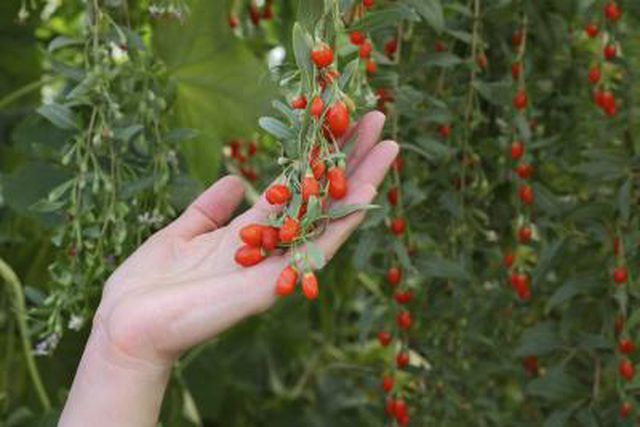Bulbs
Flower Basics
Flower Beds & Specialty Gardens
Flower Garden
Garden Furniture
Garden Gnomes
Garden Seeds
Garden Sheds
Garden Statues
Garden Tools & Supplies
Gardening Basics
Green & Organic
Groundcovers & Vines
Growing Annuals
Growing Basil
Growing Beans
Growing Berries
Growing Blueberries
Growing Cactus
Growing Corn
Growing Cotton
Growing Edibles
Growing Flowers
Growing Garlic
Growing Grapes
Growing Grass
Growing Herbs
Growing Jasmine
Growing Mint
Growing Mushrooms
Orchids
Growing Peanuts
Growing Perennials
Growing Plants
Growing Rosemary
Growing Roses
Growing Strawberries
Growing Sunflowers
Growing Thyme
Growing Tomatoes
Growing Tulips
Growing Vegetables
Herb Basics
Herb Garden
Indoor Growing
Landscaping Basics
Landscaping Patios
Landscaping Plants
Landscaping Shrubs
Landscaping Trees
Landscaping Walks & Pathways
Lawn Basics
Lawn Maintenance
Lawn Mowers
Lawn Ornaments
Lawn Planting
Lawn Tools
Outdoor Growing
Overall Landscape Planning
Pests, Weeds & Problems
Plant Basics
Rock Garden
Rose Garden
Shrubs
Soil
Specialty Gardens
Trees
Vegetable Garden
Yard Maintenance
How to Care for a Goji Berry Plant
How to Care for a Goji Berry Plant. Two deciduous, fruit-bearing shrub species share the common name goji berry: Lycium barbarum and Lycium chinense. They also share similar growing conditions, although the former grows best within U.S. Department of Agriculture plant hardiness zones 6b through 9b, while the latter's growing range extends to USDA...

Two deciduous, fruit-bearing shrub species share the common name goji berry: Lycium barbarum and Lycium chinense. They also share similar growing conditions, although the former grows best within U.S. Department of Agriculture plant hardiness zones 6b through 9b, while the latter's growing range extends to USDA zone 4b. Goji berries require moderate care to maintain their appearance and promote abundant fruiting. However, their care needs vary with the shrub's growing conditions and the season.
Watering and Humidity
Goji berry shrubs tolerate occasional drought once established, but they will look better and produce more fruit if watered routinely during the summer months. Provide 1 inch of water weekly to keep the shrub hydrated and to raise the humidity level to near 50 percent, which is the ideal humidity level for goji berries. During hot, dry or windy weather, mist the shrub with water to keep the foliage from drying out. Pot-grown goji berry shrubs require regular watering year-round because their soil holds far less moisture. Check the moisture level twice weekly and add water whenever it feels mostly dry below the surface.
Fertilizer Needs
Goji berry shrubs are moderately heavy feeders, but their needs vary with their growing conditions. Garden-grown specimens do not need fertilizer to survive, but their fruit production will increase if they are routinely fed. Pot-grown goji berry shrubs require regular feeding during the growing season because they quickly deplete the nutrient content of their soil. Feed pot-grown goji berries every other week with 1 teaspoon of 15-15-15 fertilizer diluted in 1 gallon of water. Feed garden-grown goji berries with slow-release, 10-10-10 ratio fertilizer applied at a rate of 3 pounds per 100 square feet of area. Apply the fertilizer every three months starting in late winter or early spring when the leaf buds begin to swell.
Pruning and Grooming
Mature goji berry shrubs develop sprawling, somewhat rangy growth habit that can overtake smaller garden beds. Pruning back the tips in late winter or early spring will help keep them in check and may promote denser, lusher growth. Although goji berry shrubs tolerate heavy pruning, it is best to remove no more than one-fourth of the total stem length. Clean your pruning shears with full-strength household disinfectant and rinse them thoroughly before use. Snip off the unwanted growth along with any crossed branches from the shrub's interior. Also, remove any root suckers as they appear during the growing season because they rob the shrub's energy and may decrease fruit production.
Common Problems
Although seldom serious, infestations of whiteflies, aphids and Japanese beetles may plague goji berry shrubs from time to time. If only a few insects are present, remove them manually or with a strong stream of water from a garden hose. More pervasive or stubborn infestations may require chemical control to keep them in check. Create a 1-percent solution of neem oil and water by mixing 1 1/3 ounces -- or roughly 2 1/2 tablespoons -- of neem oil with 1 gallon of water. Saturate the foliage and stems of the goji berry with the neem oil solution on a still, cool morning. Repeat applications every three to five days until the insect problem subsides. Although neem oil is non-toxic, wear a face mask and goggles when working with it to prevent accidental inhalation.